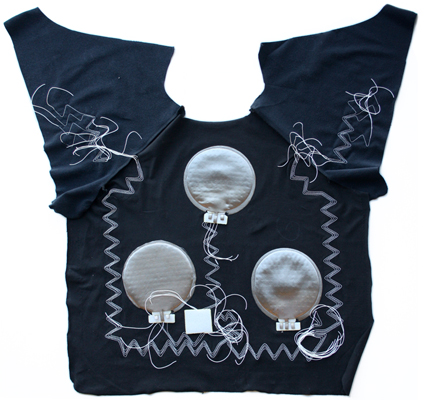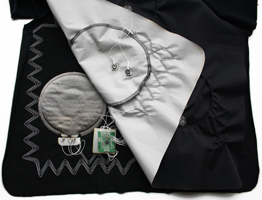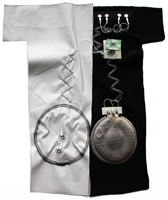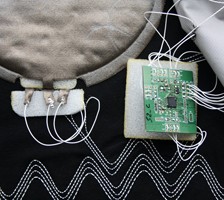Effective tele-rehabilitation at home. Research and development of systems, technologies, methods and mechanisms.
April 2009 – December 2011
* Collaboration project at CETEMMSA Technology Centre (now EURECAT).

[ T H E P R O J E C T ]
Aims
• Set-up a new framework for telehealth applications such as telerehabilitation and telemonitoring.
• Investigate, develop and evaluate low-cost technologies for rehabilitation and training at home for people with cognitive and motor disabilities, and its associated remote monitoring.
Tasks and outcomes
• Investigate and develop interfaces for patients and therapists focused on: devices, management of training guidelines, processed and unprocessed data and update and modification of training plans.
• Identify the essential aspects of the current theories and practices of rehabilitation and training.
• Develop portable devices for telehealth, telerehabilitation and telemonitoring.
• Evaluate the created telehealth framework, including the testing of the developed devices with patients.
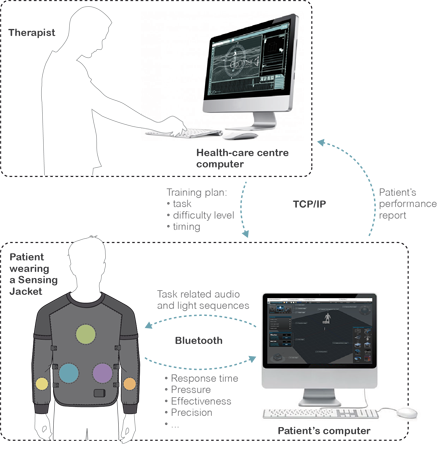
The Sensing Jacket [V0.3]
A responsive garment for cognitive and motor rehabilitation
This wearable device is part of the telerehabilitation system developed for the Tele-Rehab project. It connects via Bluetooth to a local computer at the patient’s home. The computer manages the training program, which is established remotely by the therapist, and collects the data from the patients’ performance to sends it back to the therapist.
The jacket presents five sensor areas, over which luminous pads are placed. The training tasks reside in pressing the sensor areas to: (a) activate the luminous pads, creating light sequences in a required way, or (b) turn the pads off, following a determined light sequence. Additional feedback is given to the patient through sound emitted by the local computer. Each sensor area has two active zones that enable to evaluate the precision of the patient in performing the specified task.
The garment has two laterals openings as well as detachable sleeves in order to facilitate dressing and undressing the patient. Its front side presents a waterproof textile for easy cleaning and the backside is made of an elastic meshed textile for breathability and comfort purposes.
The sensing jacket aims at enhancing both cognitive and motor rehabilitation by bringing in the possibility of using rhythm to train sequence of movements. In motor rehabilitation, the garment can be worn on the patient to train the non-affected limb in the recognition of the paretic one (flexor pattern), and on the caregiver to train the paretic limb of the patient (extensor pattern).
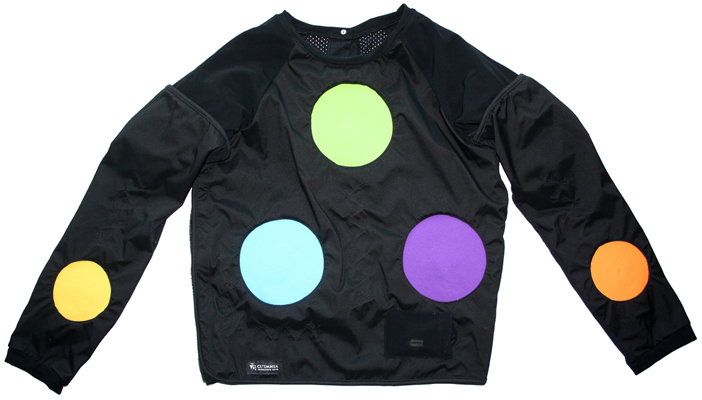

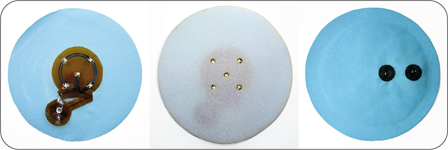

[ M Y R O L E ]
Design and development of the Sensing Jacket
• Participation on the process of analysis and definition of the jacket’s requirements (leaded by IBV and Guttmann Institute):
– Focus groups and interviews with physicians, physiotherapists, occupational therapists and nurses.
– Testing of preliminary prototypes and interviews with patients.
• Design of the jacket according to usability and performance requirements:
– Design of the garment’s structure.
– Selection of materials and trimmings.
– Design of the detachable luminous pads and its fastening/connexion system.
• Design of the sensor-actuator system according to usability and performance requirements:
– Selection of the most adequate sensing and actuating technologies for the required performance.
– Design of resistive textile sensors (Sensing Jacket 0.1 and 0.2) and muti-layered textile switches with two sensing areas (Sensing Jacket 0.3).
– Design of the electro-textile circuit of the garment based on: conductive ribbons (Sensing Jacket 0.1), Kapton (Sensing Jacket 0.2), embroided wire (Sensing Jacket 0.3).
FUNDING
Spanish Ministry of Science and Innovation
European Regional Development Fund (ERDF)
Applied Research and Experimental Development Program.
Subprogram for Technology Centres 2009.
CONSORTIUM
Fatronik (now Tecnalia)
Robotiker (now Tecnalia)
IBV – Biomechanics Institute of Valencia
CETEMMSA Technology Centre (now EURECAT)
EXTERNAL COLLABORATION
Guttmann Institute
